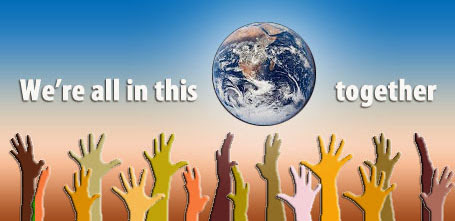In my last column, I discussed credit unions hoping to find one locally that might more transparently demonstrate sustainability values. I did hear back from one of my own credit unions, but not with any information that would make my judgment of their triple-bottom-line — social, environmental an financial — performance any easier. Fortunately I know enough from my readings in emerging business practices, including finance, that there are conscientious actors out there addressing triple-bottom-line outcomes in the financial sector. I have also identified one local credit union, among the many, that is also a Community Development Financial Institution, i.e. dedicated to funding disadvantaged communities. They scored high on the banklocal.info website I mentioned in the earlier column.

Globally, the UN Environment Programme Finance Initiative developed the “Principles for Responsible Investment” in 2005 (see www.unep.pri.org for more details). The six core principles are:
1: We will incorporate ESG [Environmental, Social and Governance] issues into investment analysis and decision-making processes.
2: We will be active owners and incorporate ESG issues into our ownership policies and practices.
3: We will seek appropriate disclosure on ESG issues by the entities in which we invest.
4: We will promote acceptance and implementation of the Principles within the investment industry.
5: We will work together to enhance our effectiveness in implementing the Principles.
6: We will each report on our activities and progress towards implementing the Principles.
The principles, aimed at institutional investors (i.e., foundations, pension funds, investment banks, university endowments, etc.), now have more than 1,400 signatories committed to those principles. Assets under management by these signatories now exceed $59 trillion. When the old guard tells you sustainable investing is a loser, tell that to these players.
But what about best practices for banking generally? Using my connections nationally with triple-bottom-line leaders, I was directed to Vancity. A credit union in Vancouver, B.C., with more than 500,000 members, Vancity isn’t shy in sharing its vision for what community banking should be. You can read it on their website. (excerpts here)
"At Vancity, our vision is to redefine wealth in a way that furthers the financial, social and environmental well-being of our members and their communities.
"As of December 31, 2007, Vancity is officially a carbon-neutral organization. … Our data was audited by Interpraxis (our social auditor).
"Currently, the minimum wage in BC is $10.25/hour, but the living wage in metro Vancouver is $20.68/hour[$15.14US]. This means that families who work for low wages often have to face impossible choices: buy food or heat the house, feed the children or pay the rent. Paying a living wage allows individuals and families to meet their basic needs and contribute to their communities. A Living wage means strong local economies, sustainable cities and healthy communities."
I could write many columns on Vancity based on a review of their very transparent and informative website and conversations with their leaders. But Vancity isn’t alone. When I asked them for examples of other shining examples of triple-bottom-line credit unions, they immediately pointed to the Global Alliance for Banking on Values.
This is an emergent international group of banks committed to higher standards of sustainability and community wealth building, which we might hope local banks and credit unions would support. But there are currently only eight U.S. financial institutions which have joined this group representing banks and credit unions from Africa, Asia, Europe, Latina America and Australia. What is it they share, and could we coax our local credit unions and banks to adopt the principles and practices they support? The GABV Principles of Sustainable Banking are intended to describe fundamental pillars of values-based banking:
1. Triple bottom line approach at the heart of the business model
2. Grounded in communities, serving the real economy and enabling new business models to meet the needs of both
3. Long-term relationships with clients and a direct understanding of their economic activities and the risks involved
4. Long-term, self-sustaining and resilient to outside disruptions
5. Transparent and inclusive governance
6. All of these principles embedded in the culture of the bank.
Can our local banking leaders re-evaluate what good banking looks like based on the successful example of credit unions line Vancity? If we members of credit unions never ask or involve themselves in the direction of their credit union, the narrow economic growth paradigm will continue to erode away the cooperative and community wealth notion behind them. Credit unions should be natural homes for the type of sustainable enterprise that Vancity emulates.
In fact, it was why they were created in the U.S. in the mid-1920s. Maybe we need to elect a slate of directors at our credit unions that sees the virtues of a TBL focus? I am sure willing to help that cause. Do credit union members even know how to run for a position on your board? From the few local credit union websites I have examined, it is not at all transparent, a key principle of both the Principles for Responsible Investment and the Principles of Responsible Banking. We have a long way to go.

